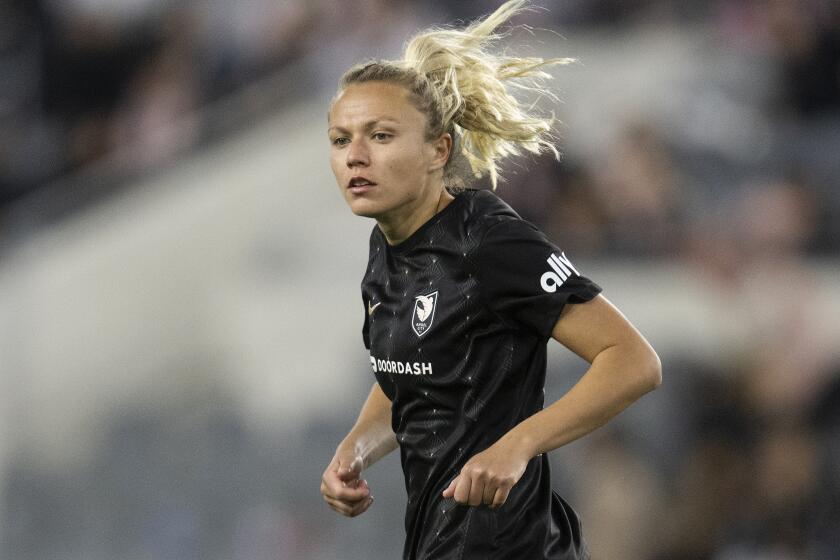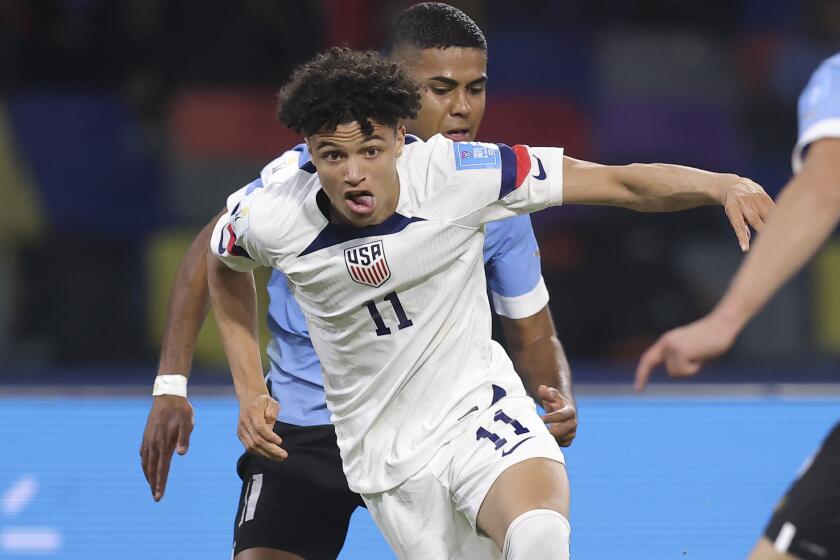Defender Races to Start on Jan. 14 : America’s Cup: Four round-robin competitions over four months to determine defender.
It might take a math degree to make sense out of the just-announced America’s Cup Defender Selection Series, but to make the races equitable, the America’s Cup Organizing Committee said, this is the way it has to be.
Before meeting the challenger for the best-of-seven America’s Cup races beginning May 9, the defender, either Team Dennis Conner or America-3 will have sailed at least 33 races and possibly as many as 39, according to Gene Trepte, chairman of the ACOC’s Defense Committee.
Wednesday’s announcement detailed the defender trials, which start Jan. 14 with four round-robin series over four months and conclude with a best-of-13 finals beginning April 17.
“It’s a complicated process,” ACOC spokeswoman Jane Eagleson said, “but the way it’s being done is intended to provide an even challenge. It is a unique format, but it was based on the cooperative efforts of the defenders.”
Said Jerry La Dow, executive director for Team Dennis Conner: “What’s key here is the defenders have decided on how to (run the defense races), not the committee. We sat down with America-3 and came up with a format everyone was satisfied with and avoided any controversy.”
Defenders accrue points during each round-robin, where Yacht A races Yacht B on the first day, Yacht A races Yacht C on the second, Yacht B races Yacht C on the third, and so forth.
This formula is based on the assumption that America-3, skippered by Bill Koch, will enter yachts Jayhawk and Defiant in the trials, and Conner, the defending America’s Cup skipper, will only enter Stars & Stripes. Conner, whom Koch is trying to oust, is expected to announce at a press conference this afternoon if he will build a second yacht.
“At this point, conditions have been formulated based on expectations that we’ll have one boat from Team Dennis Conner and two from America-3,” Eagleson said. “If Dennis wants a second slot available, before conditions are finalized, then we could provide for that. But he may even opt to work with the one slot and alternate the boats around.”
Victory points are worth more as the round-robins progress. The yacht with the most points at the end of the third round will begin the fourth round with two victories, the yacht with the next-highest point total will have one victory, and the third-place yacht, no victories. The two yachts with the most victories at the end of the fourth round-robin will advance to the defender finals.
Defense syndicates can substitute yachts between series, with no penalties, and yachts may be removed and substituted back in between series. That’s a distinct advantage over the 10 challengers, who must name their competing yacht on Jan. 24, a day before their trials begin. The challengers must stay with their boats through the trials and, for one challenger, the America’s Cup finals.
“It’s the only home-court advantage the defenders have left,” Eagleson said.
In 1987 off Fremantle, Australia, six boats competed in the defender trials--five rounds of points-based match races. Boats with the four highest scores advanced after the third round. The fifth round, the finals, was a best-of-nine races. In Fremantle, the defender waived its right to substitute yachts.
These formats differs dramatically from past defender trials, which David Roscow, executive vice president of America-3, called “observation trials.”
“When the New York Yacht Club ran the defenders trials,” Roscow said, “a man in a red coat would excuse them after the races, then go up to one yacht and ask them to defend the America’s Cup. In this case, we have a very objective scoring system that allows boat to win the sufficient points to win the series.”





